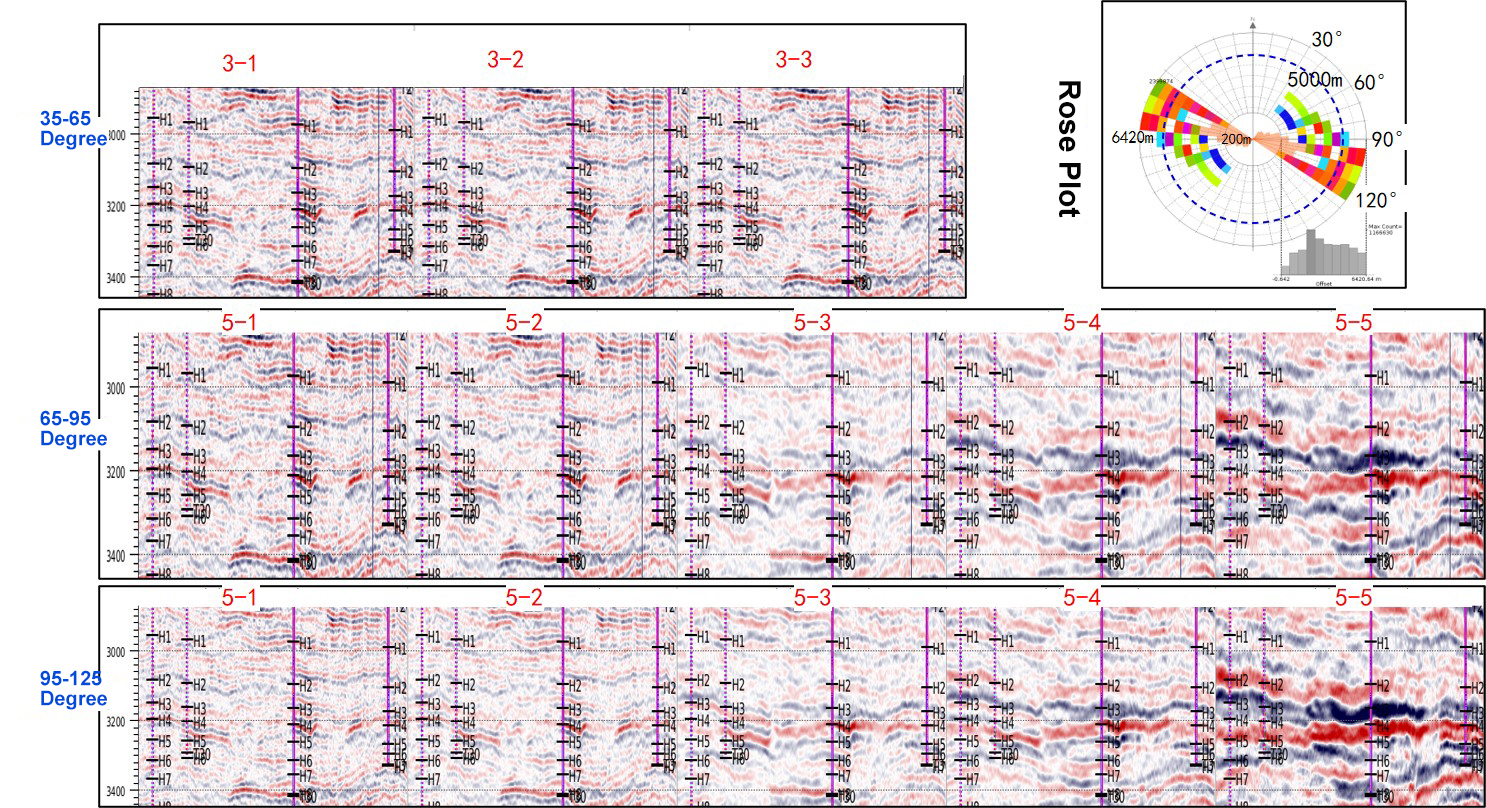Reservoir prediction technology based on wide bandwidth wide azimuth seismic data
Research tasks
This research area is a certain offshore survey. The predecessors used three-dimensional seismic data to predict the favorable reservoir of the target layer. Then the plane spread of the reservoir has been basically clarified. But there is a certain error in the thickness of the sand body and porosity permeability relationship of the reservoir of the target layer are poor. The high-permeability "sweet spot" reservoir cannot be effectively inverted by relying on conventional seismic parameters. This study expects to use the "two wide" seismic data to carry out technical research and solve the above geological problems.
Research ideas
First of all, the main features of this project that are different from other projects are clarified, that is, the seismic data studied is the "two-wide" seismic data. Therefore, how to extract the seismic parameters in the "two wide" seismic data to maximize the prediction of reservoir spread and the prediction of ground stress and cracks has become the top priority of this study, and the technical difficulties include azimuth optimization and sub-wave extraction. In view of these technical difficulties, first of all, starting from the well point, the logging data environmental correction, standardization, petrophysical modeling and sensitive parameter analysis are carried out for the main well points;

A template for the relationship between elastic parameters and lithology, physical properties and oil-gas properties based on rock physical interpretation.
On the basis of understanding the response of elastic parameters to lithology, physical properties and gas content, the angular channel set is partially superimposed according to the three azimuth ranges of 35-65, 65-95, 95-125 degrees, and the angle of incidence in the azimuth range of 35-65 degrees is only 30 degrees, and only 3 partial stacks are made.

Azimuth partial stack processing and optimization for gather
In the subsequent pre-stack seismic inversion, broadband seismic sub-waves are a technical difficulty. In this study, the logging data was used to estimate conventional phase spectral waves, and wide frequency seismic to estimate amplitude spectral waves, and wide frequency amplitude-phase spectral waves were obtained through spectral merger technology;

Broadband seismic wavelet extraction
On this basis, the "two wide" seismic data are used to carry out reservoir seismic pre-stack inversion research, and reverse performance of longitudinal wave impedance, shear wave impedance, density, longitudinal wave velocity ratio, Poisson ratio, λρ, μρ and other data bodies, beneficial reservoir spreading, sweet spot prediction and hydrocarbon detection are carried out;

Broadband seismic inversion of thin and thick layer geological body has higher resolution, sandstone and mudstone superimposed layers is clear.
Finally, for the deep layer, the "two wide" seismic data, especially the wide azimuth information, is used to predict the ground stress and cracks of the lower stratospheric system, and the corresponding outcome data are formed.

Seismic fracture prediction from pre-stack wide azimuth data
Research results
This case study focuses on the main target zone in this area and overcomes the difficulty of poor seismic data quality. By means of pre-stack inversion and other technical means, the study is carried out on the reservoir sweet spots and favorable areas for fracture development, which provides a solid foundation for the evaluation and deployment of this area and the reserve upgrade. At the same time, aiming at the technical difficulties in the project, azimuth seismic fracture prediction and stress prediction are innovatively carried out. The final project results were recognized and well received by customers.










